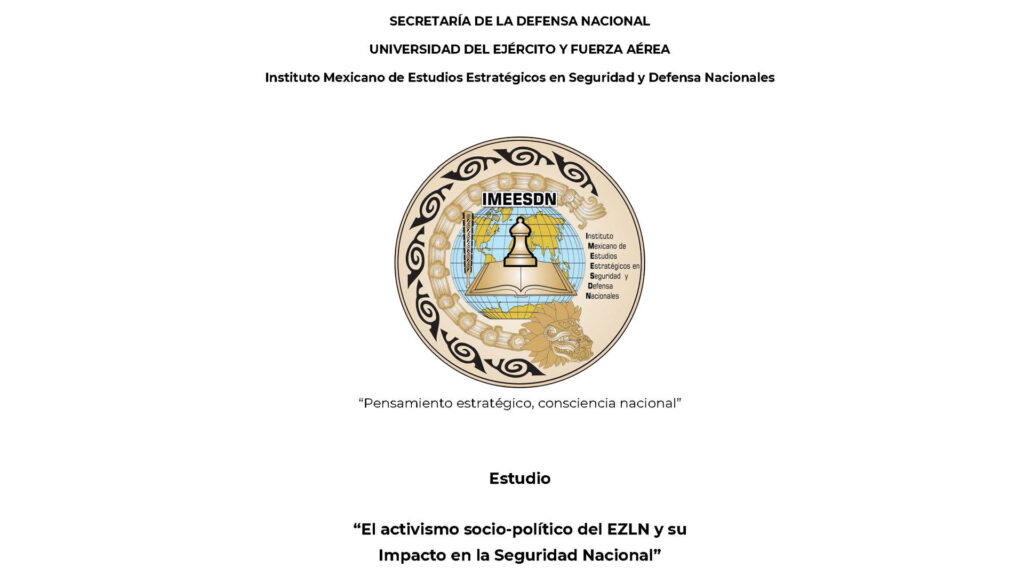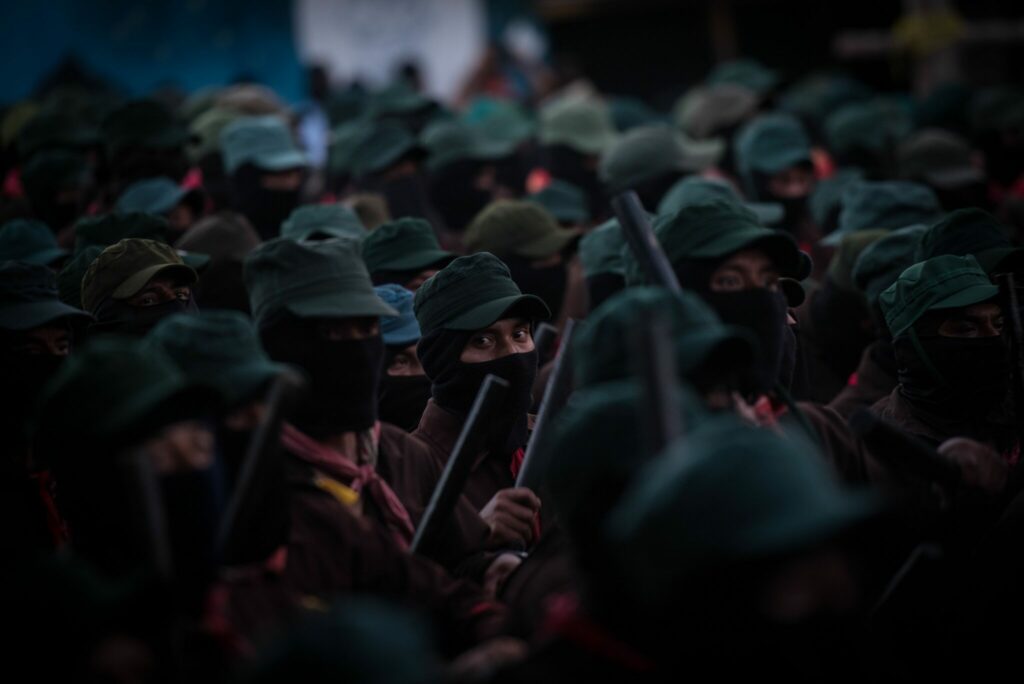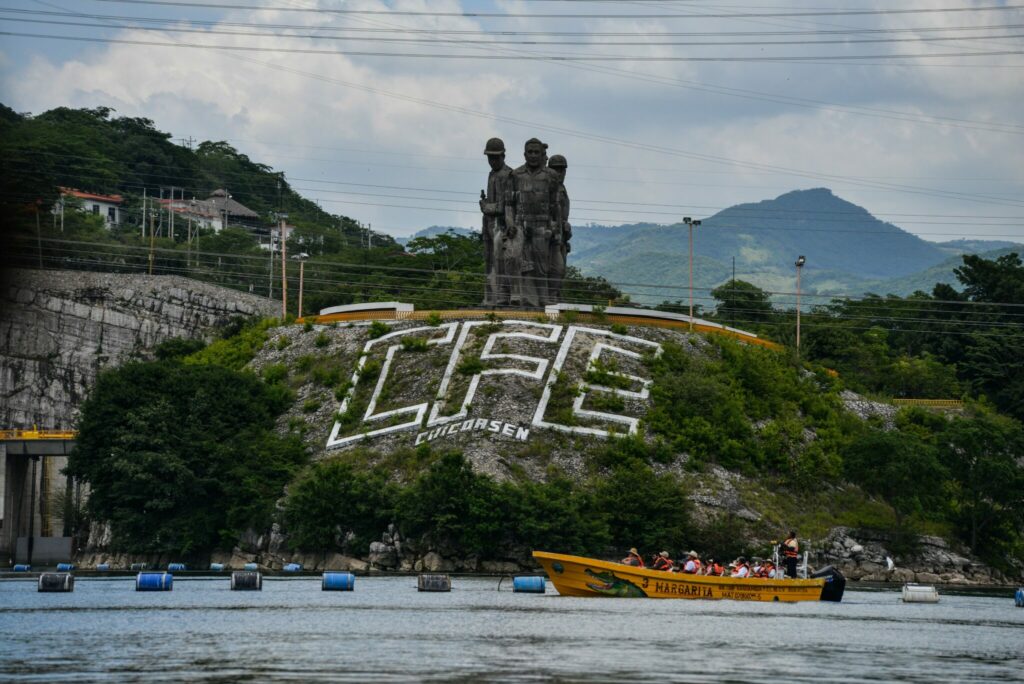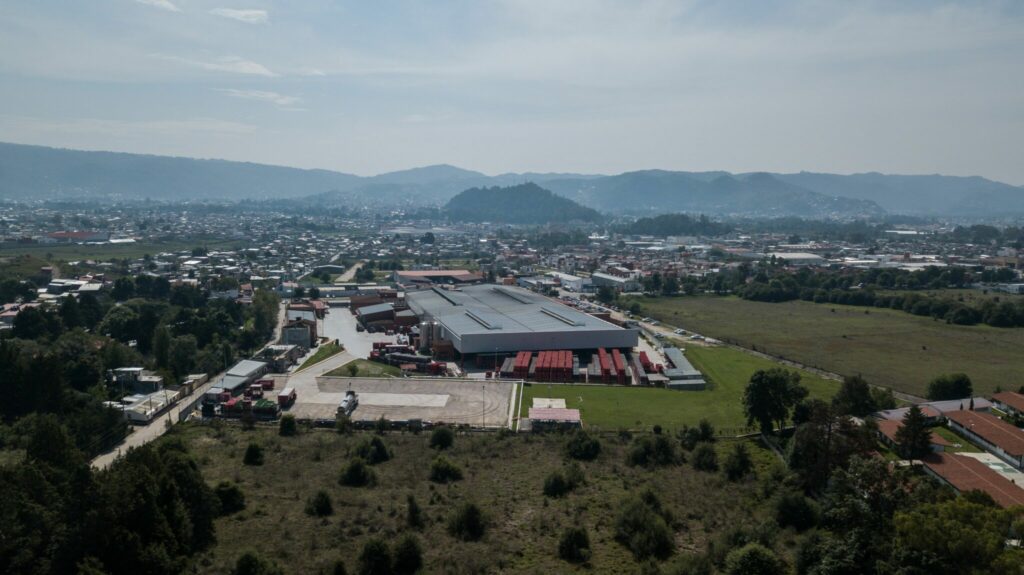
By Zosísimo Camacho
Minerals, water, wood and fossil fuels are among the resources identified by the Sedena in Zapatista territory. They are of interest to transnationals such as FEMSA Coca Cola, Frontier Development Group and Firts Majestic Silver Corp, and to the public companies CFE and Pemex.
The “claims” of the “self-styled” Zapatista Army of National Liberation (EZLN) to the Mexican State are focused on the current “mining, oil wells, super highways, highways and mega [water] wells” concessions, as well as on the construction of the Mayan Train, according to an internal document of the Secretariat of National Defense (Sedena), dated dated February 2020.
It warned that the policies and development projects of the federal government in the indigenous regions, as well as the continuity of the concessions granted in previous six-year periods, have “increased the tension” between the Zapatista bases and leaders and those of the federal government.
The study Socio-political Activism of the EZLN and its Impact on the National Security, ordered by Sedena to its Mexican Institute of Strategic Studies in Security and National Defense, pointed out tensions between the Zapatista movement and the federal and state governments due to the arrival of public and private companies to indigenous territories throughout the country. And, particularly, the intentions to explore the Chiapas territory of Zapatista “influence.”
It cited the cases of the Federal Electricity Commission (CFE), Petróleos Mexicanos (Pemex), FEMSA Coca Cola, Frontier Development Group, First Majestic Silver Corp, Radius Gold and Blackfire Exploration.
It emphasized that at the center of the claims was the extraction necessary for development projects, from water, gas and oil, to timber and precious and industrial minerals.
The report placed the EZLN as one of the poles around which part of the leftist opposition to the 4T is articulated. The issues underpinning the discourse of this opposition are indigenous rights, water management, mining exploitation, electric power generation projects and the Mayan Train.

In the document El Activismo Sociopolítico del EZLN (The Sociopolitical Activism of the EZLN)– elaborated in February 2022– Sedena identified what until then were, in its opinion, the main disputes between the Zapatista movement and the government of the so-called Fourth Transformation.
Classified as “confidential,” the report pointed out that the EZLN “has become the main reference point for the indigenous community rights claimants in the country.” It considered that this had been possible because Chiapas is inhabited by 1,800,000 indigenous people. Eight out of 10 live in extreme poverty, “most of the times due to their own ancestral usos y costumbres (customs and traditions), with traditional difficulties in incorporating themselves into national development”, according to Sedena’s vision.
It also stated that, while “AMLO” (Andrés Manuel López Obrador) was in the opposition, Obradorismo and Zapatismo were “independent allies.” They had no formal relationship or association, but agreed at various junctures. Such situation ended in 2017, when the relationship between the bases of Zapatismo and those of the National Regeneration Movement (Morena) became tense.
With the electoral triumph of Obrador, the relationship became even more tense. According to Sedena’s assessment, Lopez Obrador “sent direct messages to the original indigenous groups with the intention of diluting any hostility and confrontation. At the inauguration, the second ceremony, held in the Zócalo of Mexico City, after the official one in the Chamber of Deputies, there was an indigenous ceremony linked to the presidential investiture and the leadership of the indigenous groups. Various indigenous groups participated, the EZLN was not present” (sic).
The analysis acknowledged that Zapatismo is a referent for social struggle in the world. Since its irruption in 1994 “various models of social participation have been strengthened in different parts of the world.” It mentions the Sao Paulo Forum and the Podemos party of Spain among the expressions of “critical anti-globalism” that have Zapatista inspiration.
It stated that after the “containment” of the armed uprising, the EZLN focused its activism towards the demand “to create in Mexico a multinational system within the State in the framework of human liberties, which would seek the modification of the current constitutional structure.” It referred to the demand for respect for indigenous rights and culture, embodied in the San Andres Accords which, to date, have not been recognized by the Mexican State and whose central demand is autonomy for the native peoples, tribes and nations.
The document pointed out that López Obrador’s style of governing and exercising his leadership had contributed to the break with Zapatismo. The president has sought a direct relationship with indigenous groups and individuals, “undermining the leadership. This eliminated a possible “communication and good coordination with the EZLN,” according to Sedena.
Obrador’s term has not reduced the Zapatista base, the study pointed out. As of February 2020, the EZLN had managed to keep its communities loyal and had even expanded “its territory of influence.”
It recalls that at the time the proposal of the original Mayan Train project –whose route was intended to cross Zapatista territory– would generate “confrontation on various fronts with the EZLN, including the armed one,” since the guerrilla had “said that they would defend even with their lives” their territorial integrity.
The rekindling of the conflict in the southeast could have been unleashed after the “supposed approval of Mother Earth [to the Mayan Train project] in a limited and controlled referendum,” it warned.

Water, mines and other resources
Other points of conflict between the 4T and the Zapatista movement were “[…] the claims about water [that] are linked to hydroelectric plants such as Malpaso, La Anustura and Chicoasén, which supply other states of the Federation and generate electricity for the national system, which is also sold to Guatemala; this issue feeds the social problem of water as part of the Zapatista discourse […].
The analysis warned that this situation is taken advantage of by the EZLN, since “[…] the Zapatista rhetoric is based on [the questioning] of who is the true owner of water as a national security issue […]”, an issue on which they coincide with populations from all over the country.
In additions to dams already in operation others will be built during the current government: Peñitas and Itzantun, which are priority projects because they will allow Chiapas to generate “approximately 50 percent of the national electric energy; in contrast, the data indicate that 47 percent of the inhabitants of the state […] lack electricity supply.”
It also pointed out that Zapatismo was repositioning itself among the indigenous communities of the Republic by questioning mining activities. This industry has plans to execute large projects in Chiapas, as it already does in other states of the Republic.
“In the last federal administration, nearly 99 mining concessions were granted for 50 years, along with 54 mining projects for the state [of Chiapas], where Canadian and Chinese mining companies are fundamental, requiring cheap labor and large quantities of water for their own extractive activities, right in a region that is having problems with water supply […]. The state of Chiapas, besides being one of the main water reserves, has 13 types of basic minerals for global development such as: gold, silver, copper, zinc, iron, lead, titanium, barite, tungsten, magnetite, molybdenum and salt.”

Photo: Isabel Mateos/Cuartoscuro.com
These resources are located in “regions compromised by the influence of the EZLN.” In this regard, the document cited the constitutional municipalities of Acacoyagua, Acapetahua, Chicomuselo, Frontera Comalapa, Tapachula, Tonalá, Ángel Albino Corzo, Escuintla, Motozintla, Ixhuatán, Mapastepec, Pijijiapan, Siltepec and Solusuchiapa Contalapa.
It also listed the companies that have concessions granted by previous governments and that are interested in undertaking extraction projects. They are one of Chinese origin, Up Trading, and five Canadian companies: Frontier Development Group; First Majestic; Silver Corp; Radius Gold, Inc, and Blackfire Exploration, Ltd.
These companies were granted concessions in Chiapas for “the largest barite mine in the world, an essential material for oil drilling, from which 360 thousand tons are obtained annually, in addition to the titanium and magnetite concessions in the municipalities of Pijijiapan, Acacoyagua and Chicomuselo.”
It added that the entire Soconusco region is of interest to foreign corporations dedicated to the extraction of uranium and titanium. The former, “used in the processing of energy in nuclear plants”; the latter, “in the manufacture of airplanes, helicopters, armor, warships, spacecraft and missiles.” For this reason, both are coveted by “today’s military powers such as the United States, China and Russia.”
It pointed out that in terms of mining, Chiapas is divided into seven districts. In addition to the listed minerals, amber, limestone, quartz, quartz, zhanghengite, clay, sand and sulfur are extracted in these districts.

The interests in the extraction of these resources “coincide” with the plans for a highway route with private investment from Pijijiapan, in the Soconusco area, to Palenque. Added to this is the Mayan Train “and its cargo mobility along the Peninsula located between the Gulf of Mexico and the Caribbean Sea.”
In terms of oil, Pemex works in 24 Chiapas areas located in five municipalities: Reforma, Juarez, Pichucalco, Ostuacan and Sunapa. It operates 129 oil, oil and gas wells. “Likewise, Chiapas has one of the largest gas processing complexes in the southeast of Mexico: Cactus. It occupies an expanse of 1,822 kilometers.
The analysis pointed out that the social programs Sembrando Vida, Jóvenes Construyendo el Futuro and the Benito Juárez scholarships are linked to priority projects such as the Mayan Train and National Reforestation. “They have a great impact due to the current conditions of poverty and social inequality, even more so with the numbers in the indigenous population.”

The document –part of the thousands of files hacked from the Sedena by the Guacamaya group of cyber hackers– also issued “recommendations” to the federal government with respect to Zapatismo. The first of them stated: “the President of the Republic should consider in his discourse the provocation towards the EZLN, avoid open confrontation that favors the formation of an indigenous front against the government and the Armed Forces.”
It also pointed out that: “the intelligence attention to Zapatista women is not clear and precise; it is relevant to monitor and follow up on them, given that they are often the carriers of messages from the EZLN leadership to other organizations.”
It concluded that “the social activism of the EZLN and its adherent communities has not reached the level of threat to the National Security of the country; the social, Economic and political backwardness of the Chiapas area requires the attention of all levels of government, from federal to municipal, in a coordinated effort, including the consideration of the problems of the EZLN itself.”
This article was published in Spanish on December 18th, 2022. https://contralinea.com.mx/interno/semana/trasnacionales-codician-recursos-naturales-en-territorios-zapatistas-sedena. English translation by Schools for Chiapas.
